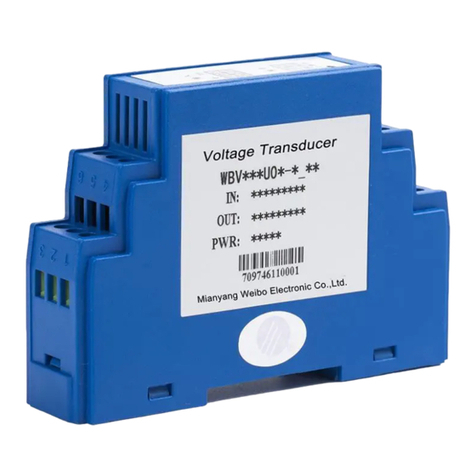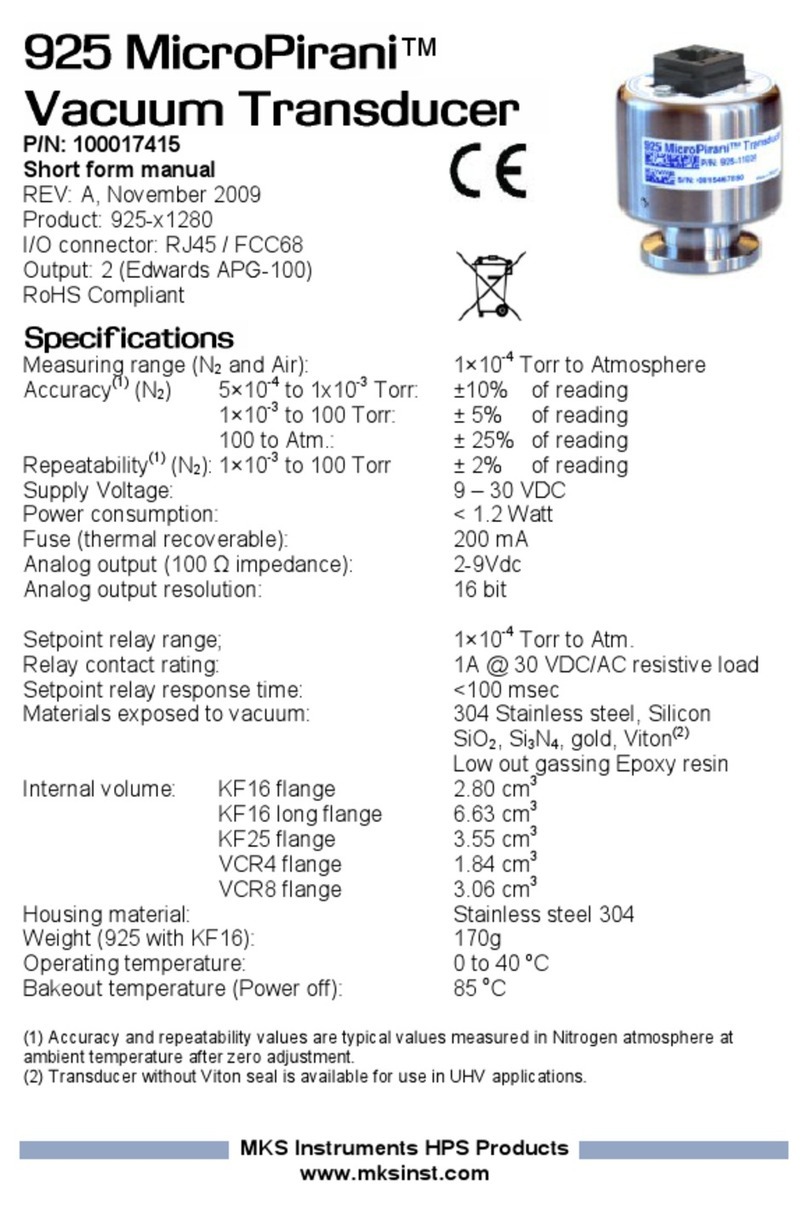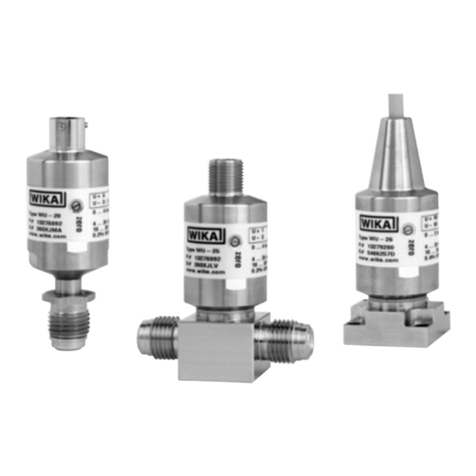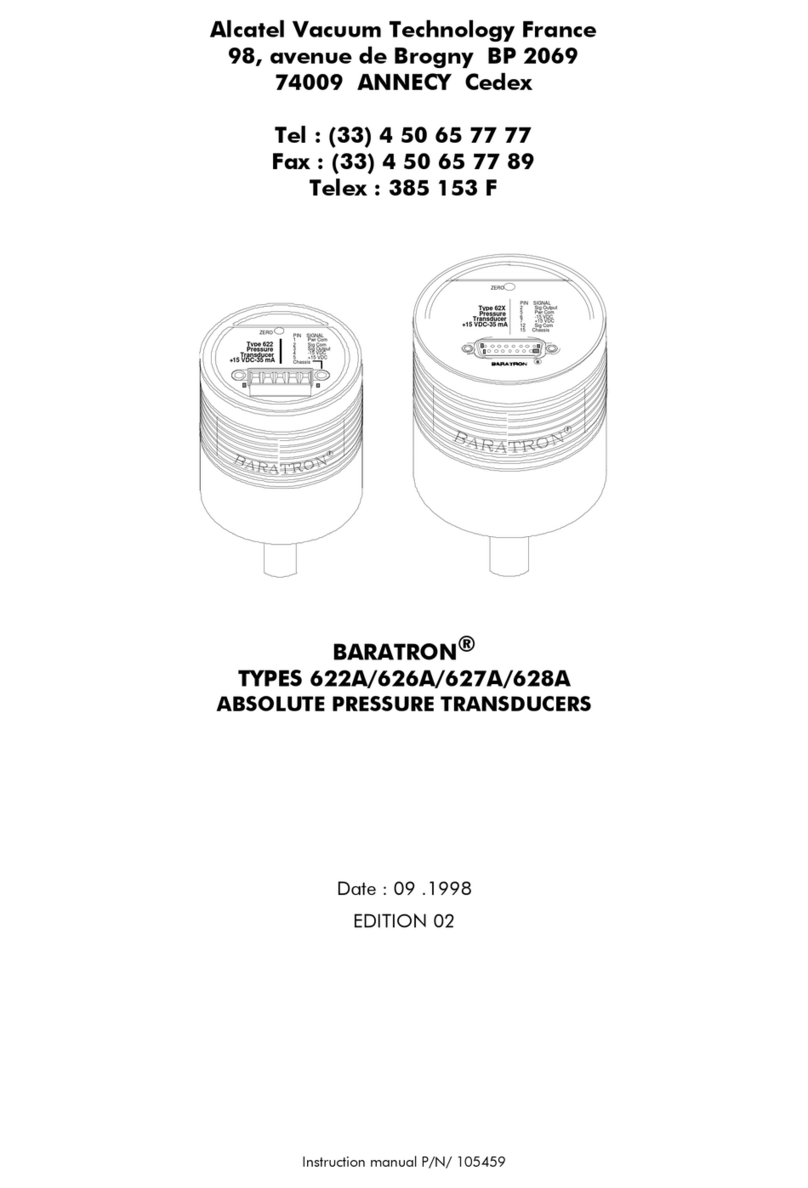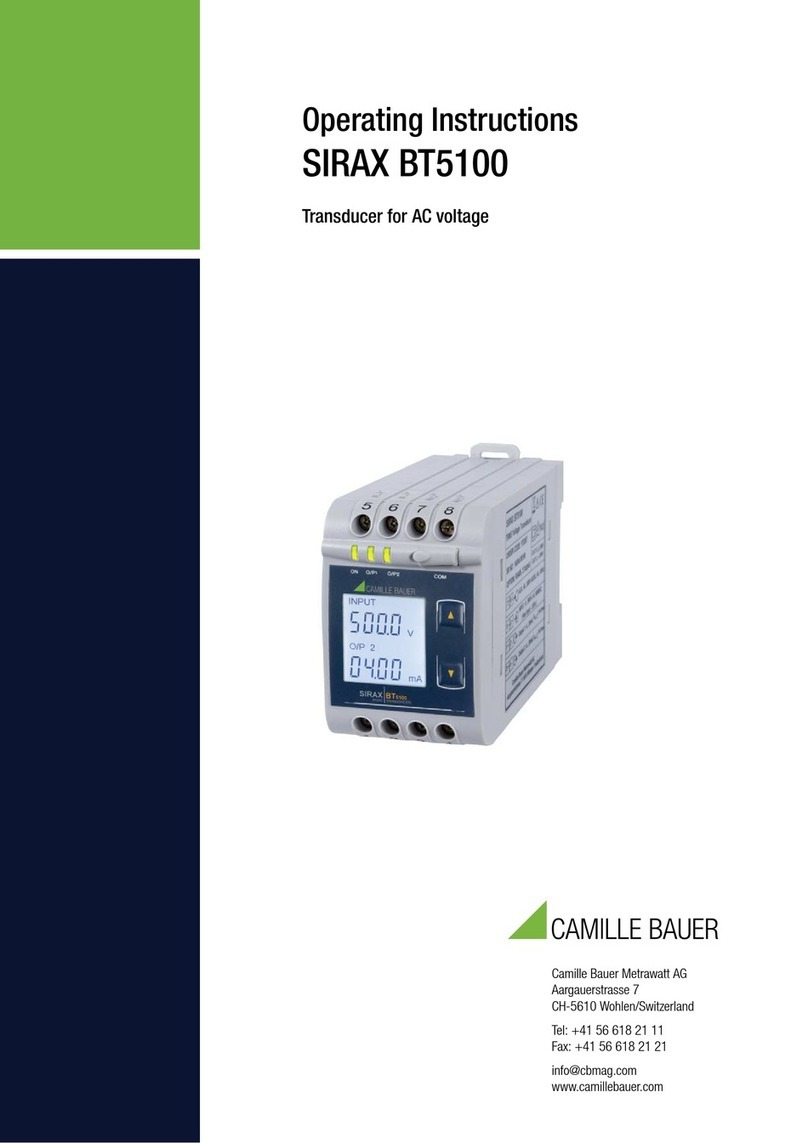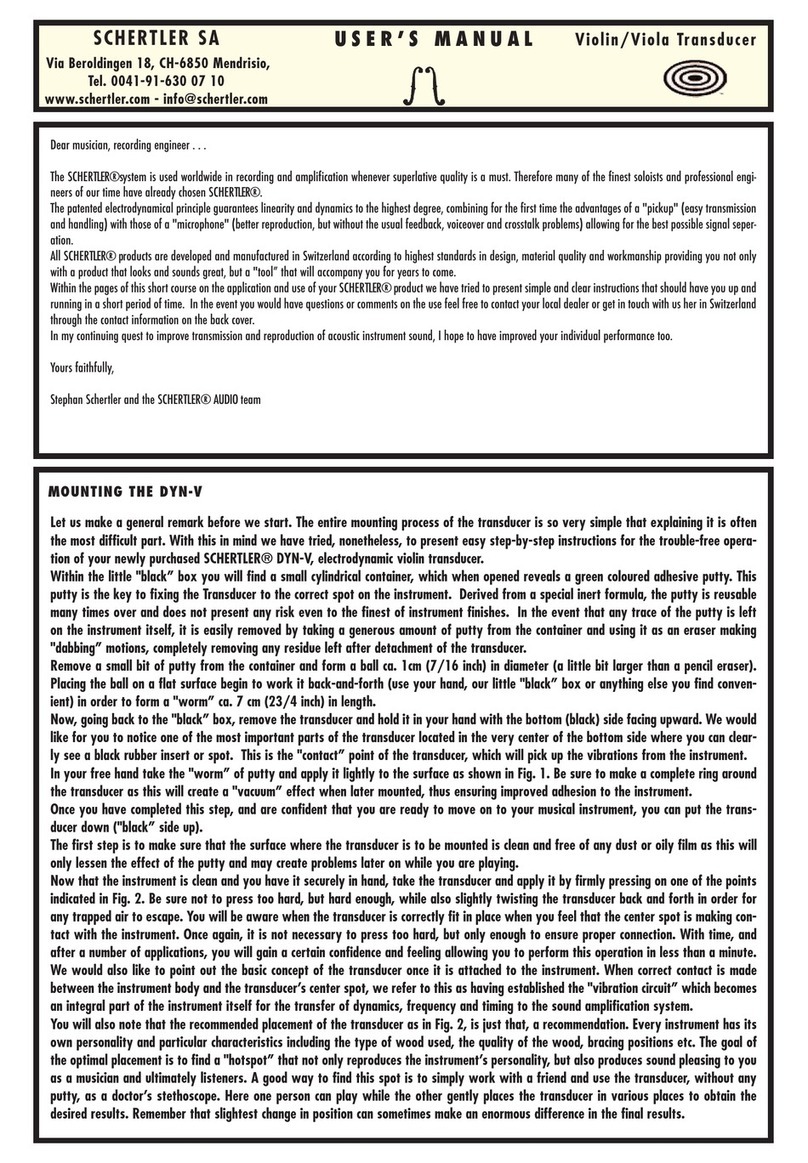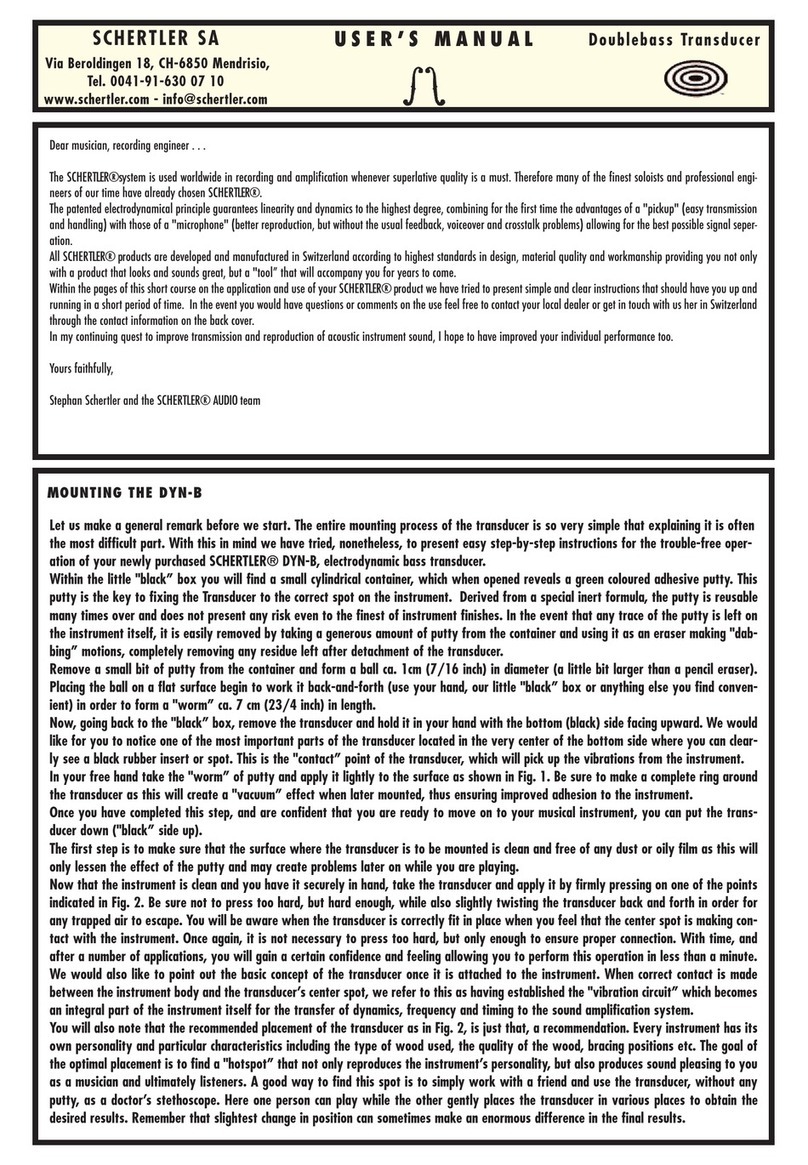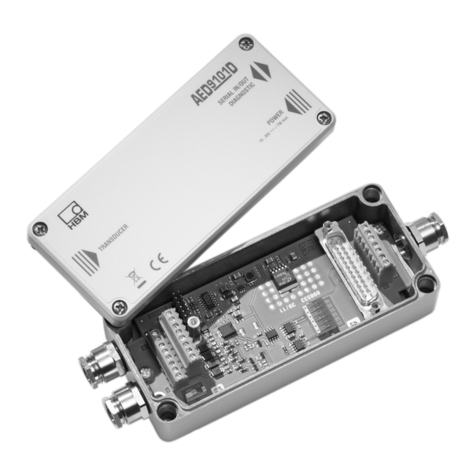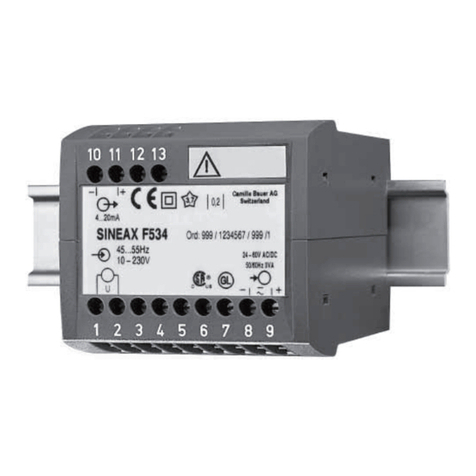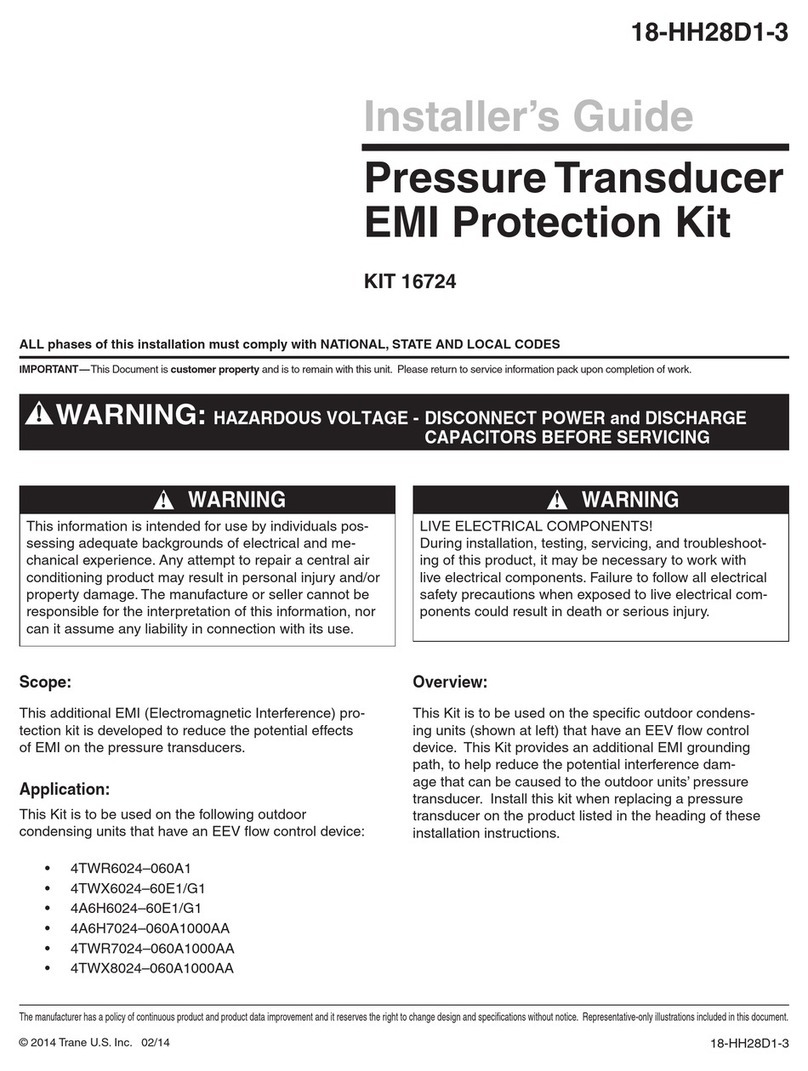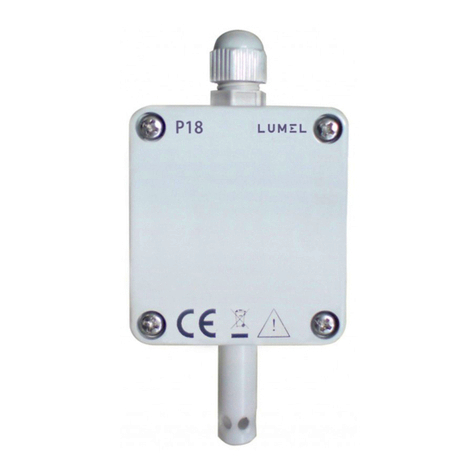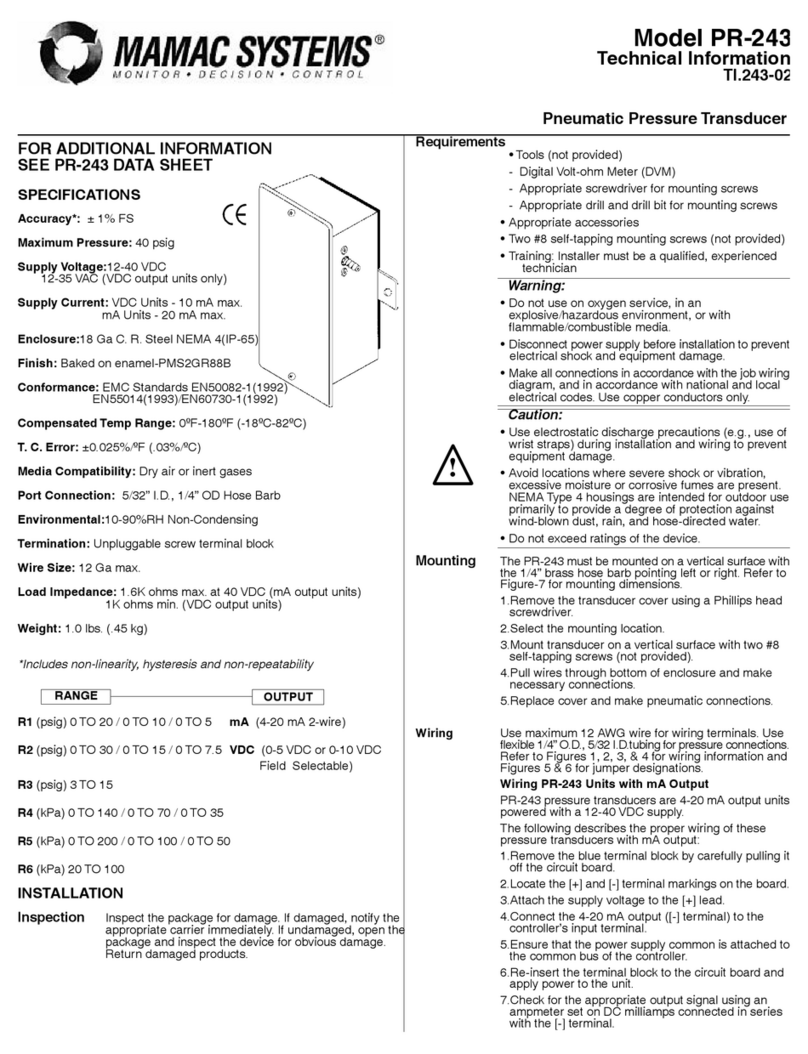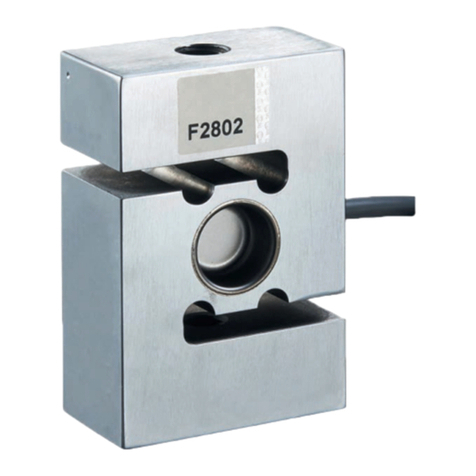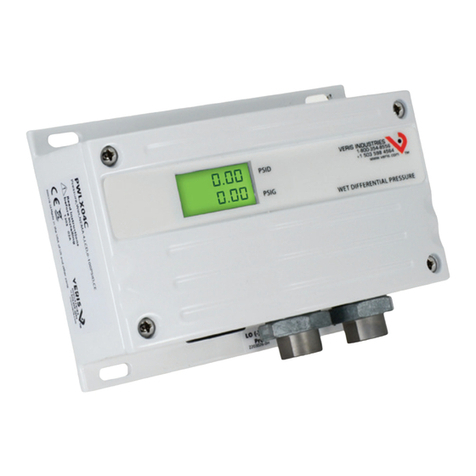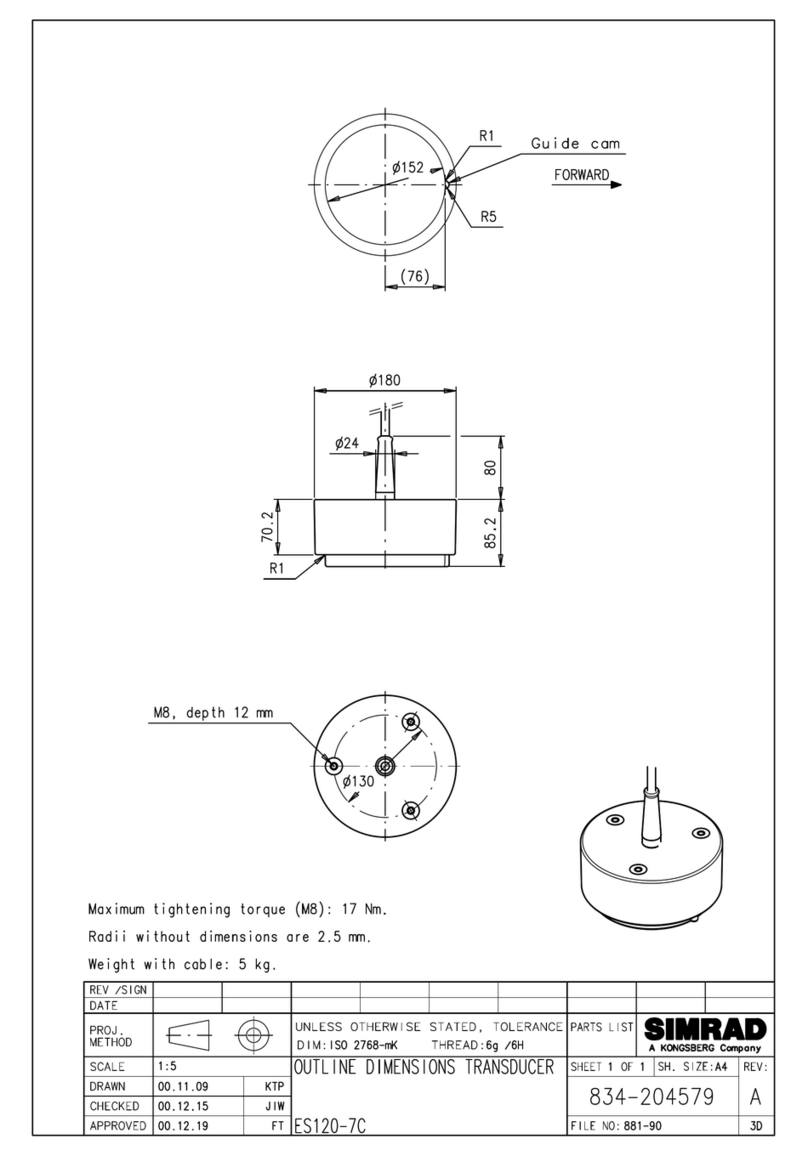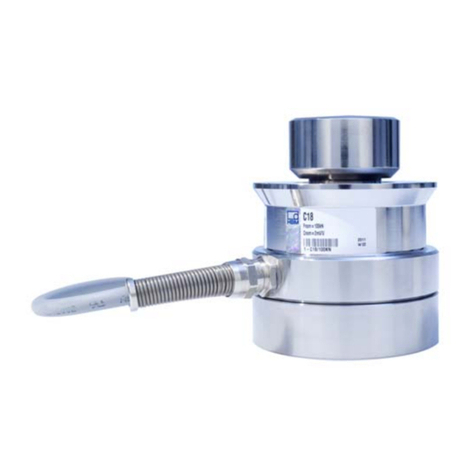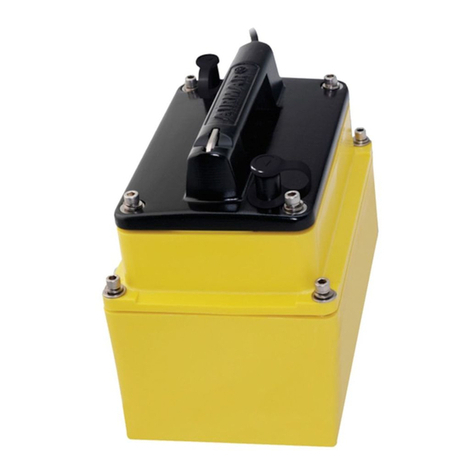DYN-V Violin/Viola Transducer
SCHERTLER SA
Via Beroldingen 18, 6850 Mendrisio, Switzerland
Tel. +41-91-630 07 10
Fax +41-91-630 07 11
web-page: www.schertler.com
e-mail: info@schertler.com
USER’S MANUAL
Dear musician, recording engineer . . .
The SCHERTLER®system is used worldwide in recording and amplification whenever superlative quality is a must. Therefore many of the finest soloists
and professional engineers of our time have already chosen SCHERTLER®.
The patented electrodynamical principle guarantees linearity and dynamics to the highest degree, combining for the first time the advantages of a
"pickup" (easy transmission and handling) with those of a "microphone" (better reproduction, but without the usual feedback, voiceover and crosstalk
problems) allowing for the best possible signal seperation.
All SCHERTLER® products are developed and manufactured in Switzerland according to highest standards in design, material quality and workman-
ship providing you not only with a product that looks and sounds great, but a "tool” that will accompany you for years to come.
Within the pages of this short course on the application and use of your SCHERTLER® product we have tried to present simple and clear instructions
that should have you up and running in a short period of time. In the event you would have questions or comments on the use feel free to contact
your local dealer or get in touch with us her in Switzerland through the contact information on the back cover.
In my continuing quest to improve transmission and reproduction of acoustic instrument sound, I hope to have improved your individual performance
too.
Yours faithfully,
Stephan Schertler
and the SCHERTLER® AUDIO team
Let us make a general remark before we start. The entire mounting process of the transducer is so very simple that explaining it is often the most difficult part.
With this in mind we have tried, nonetheless, to present easy step-by-step instructions for the trouble-free operation of your newly purchased SCHERTLER® DYN-
V, electrodynamic violin transducer.
Within the little "black” box you will find a small cylindrical container, which when opened reveals a green coloured adhesive putty. This putty is the key to fix-
ing the Transducer to the correct spot on the instrument. Derived from a special inert formula, the putty is reusable many times over and does not present any
risk even to the finest of instrument finishes. In the event that any trace of the putty is left on the instrument itself, it is easily removed by taking a generous
amount of putty from the container and using it as an eraser making "dabbing” motions, completely removing any residue left after detachment of the trans-
ducer.
Remove a small bit of putty from the container and form a ball ca. 1cm (7/16 inch) in diameter (a little bit larger than a pencil eraser). Placing the ball on a
flat surface begin to work it back-and-forth (use your hand, our little "black” box or anything else you find convenient) in order to form a "worm” ca. 7 cm
(23/4 inch) in length.
Now, going back to the "black” box, remove the transducer and hold it in your hand with the bottom (black) side facing upward. We would like for you to
notice one of the most important parts of the transducer located in the very center of the bottom side where you can clearly see a black rubber insert or spot.
This is the "contact” point of the transducer, which will pick up the vibrations from the instrument.
In your free hand take the "worm” of putty and apply it lightly to the surface as shown in Fig. 1. Be sure to make a complete ring around the transducer as this
will create a "vacuum” effect when later mounted, thus ensuring improved adhesion to the instrument.
Once you have completed this step, and are confident that you are ready to move on to your musical instrument, you can put the transducer down ("black” side
up).
The first step is to make sure that the surface where the transducer is to be mounted is clean and free of any dust or oily film as this will only lessen the effect of
the putty and may create problems later on while you are playing.
Now that the instrument is clean and you have it securely in hand, take the transducer and apply it by firmly pressing on one of the points indicated in Fig. 2.
Be sure not to press too hard, but hard enough, while also slightly twisting the transducer back and forth in order for any trapped air to escape. You will be
aware when the transducer is correctly fit in place when you feel that the center spot is making contact with the instrument. Once again, it is not necessary to
press too hard, but only enough to ensure proper connection. With time, and after a number of applications, you will gain a certain confidence and feeling
allowing you to perform this operation in less than a minute.
We would also like to point out the basic concept of the transducer once it is attached to the instrument. When correct contact is made between the instrument
body and the transducer’s center spot, we refer to this as having established the "vibration circuit” which becomes an integral part of the instrument itself for
the transfer of dynamics, frequency and timing to the sound amplification system.
You will also note that the recommended placement of the transducer as in Fig. 2, is just that, a recommendation. Every instrument has its own personality and
particular characteristics including the type of wood used, the quality of the wood, bracing positions etc. The goal of the optimal placement is to find a "hotspot”
that not only reproduces the instrument’s personality, but also produces sound pleasing to you as a musician and ultimately listeners. A good way to find this
spot is to simply work with a friend and use the transducer, without any putty, as a doctor’s stethoscope. Here one person can play while the other gently places
the transducer in various places to obtain the desired results. Remember that slightest change in position can sometimes make an enormous difference in the
final results.
MOUNTING THE TRANSDUCER
